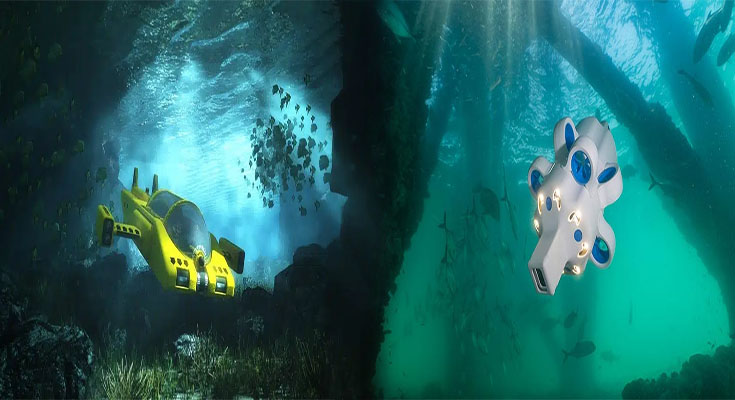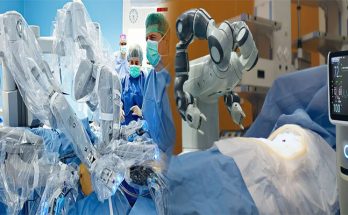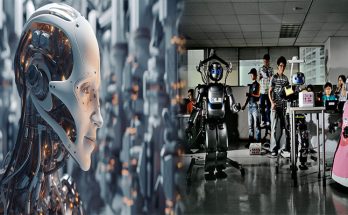The exploration of the underwater world has always intrigued humans, but the challenges of operating in this harsh and mysterious environment are immense. However, with advancements in technology, the field of autonomous underwater robotics has emerged as a game-changer. These innovative machines are revolutionizing underwater research, exploration, and environmental applications. In this article, we will delve into the innovations, uses, and environmental applications of autonomous underwater robotics.
Innovations in Autonomous Underwater Robotics
Autonomous underwater robotics combines various fields such as robotics, artificial intelligence, and marine engineering to develop intelligent machines that can operate underwater without human intervention. Some key innovations in this field include:
1. Underwater Drones
Underwater drones, or autonomous underwater vehicles (AUVs), are one of the most significant innovations. These robots can navigate through underwater environments, collecting data with their sensors, and perform a range of tasks without human control. They are equipped with advanced sonar systems, cameras, and other sensors, enabling them to map the ocean floor, investigate marine life, and study underwater geological features.
2. Biomimetic Designs
Researchers have drawn inspiration from marine creatures to design autonomous underwater robots with biomimetic features. For instance, robotic jellyfish and fish have been developed to study marine ecosystems discreetly. These robots mimic the movement and appearance of real marine animals, allowing for natural interaction with marine life and minimizing disturbance to the underwater environment.
3. Underwater Manipulators
Advancements in robotics have led to the development of underwater manipulators that can perform delicate tasks underwater. These robotic arms equipped with various tools and sensors can handle objects, collect samples, and even repair underwater structures. They are crucial for exploring underwater archaeological sites, conducting research on marine life, and assisting in offshore construction activities.
Uses of Autonomous Underwater Robotics
Autonomous underwater robotics has a wide range of applications, benefiting various industries and scientific research. Some of the notable uses include:
1. Marine Research and Exploration
Autonomous underwater robots have transformed marine research and exploration capabilities. Scientists can now study the deep ocean, coral reefs, and marine ecosystems in unprecedented detail. These robots enable us to gather data on temperature, salinity, oxygen levels, and underwater geological formations. They help in understanding the impact of climate change, monitoring endangered species, and discovering new marine species.
2. Offshore Industry
The offshore industry greatly benefits from autonomous underwater robotics. These robots can inspect, maintain, and repair underwater oil rigs, pipelines, and other infrastructure. They reduce the need for human divers in hazardous environments, improving safety and efficiency. Additionally, underwater robots are used in offshore wind farms for installation, maintenance, and monitoring activities.
3. Search and Rescue Operations
Autonomous underwater robots play a vital role in search and rescue operations. Equipped with high-resolution cameras and sonar systems, they can locate and retrieve objects or individuals underwater. These robots are instrumental in locating sunken ships, helping in underwater archaeology, and assisting rescue teams in finding survivors of maritime accidents.
Environmental Applications of Autonomous Underwater Robotics
The environmental impact of human activities in the underwater realm is a growing concern. Autonomous underwater robotics facilitates environmentally-friendly practices and enables researchers to monitor and conserve underwater ecosystems. Some important environmental applications include:
1. Marine Conservation
Autonomous underwater robots aid in monitoring and conserving marine ecosystems. They help in tracking the movement of marine animals, monitoring coral reef health, and studying the impact of pollution on underwater habitats. Through real-time data collection, underwater robots contribute to the understanding and preservation of marine biodiversity.
2. Pollution Monitoring and Cleanup
Underwater robots equipped with sensors can monitor underwater pollution and assess the quality and health of water. They can detect chemical leaks, locate sources of pollution, and aid in cleanup operations. Autonomous robots make it possible to respond quickly to environmental disasters and mitigate their impact on underwater ecosystems.
3. Underwater Mapping and Conservation Planning
Using advanced mapping techniques, autonomous underwater robots contribute to creating detailed maps of the seafloor, underwater caves, and other submerged features. These maps assist in the planning and implementation of marine protected areas, underwater conservation zones, and sustainable resource management strategies.
Autonomous underwater robotics has brought a new era of possibilities in underwater exploration, research, and environmental applications. Innovations such as underwater drones, biomimetic designs, and underwater manipulators have transformed the way we study, conserve, and utilize the underwater world. As technology continues to advance, autonomous underwater robotics will play an increasingly vital role in understanding, protecting, and responsibly utilizing the vast and enigmatic marine environment.
It’s important to acknowledge that environmental applications of autonomous underwater robotics should always prioritize the protection and preservation of underwater ecosystems and biodiversity while conducting research and industrial activities.





